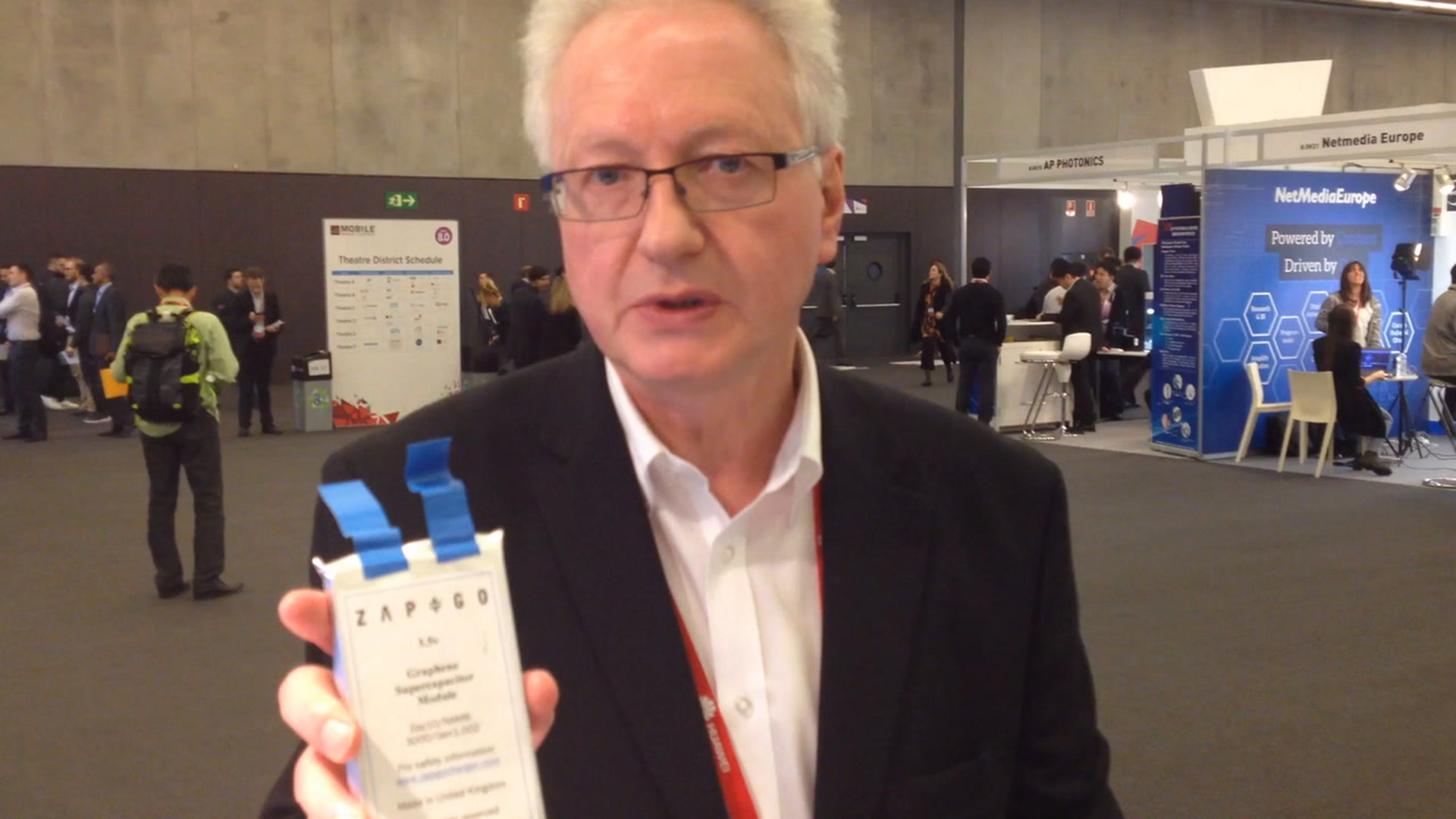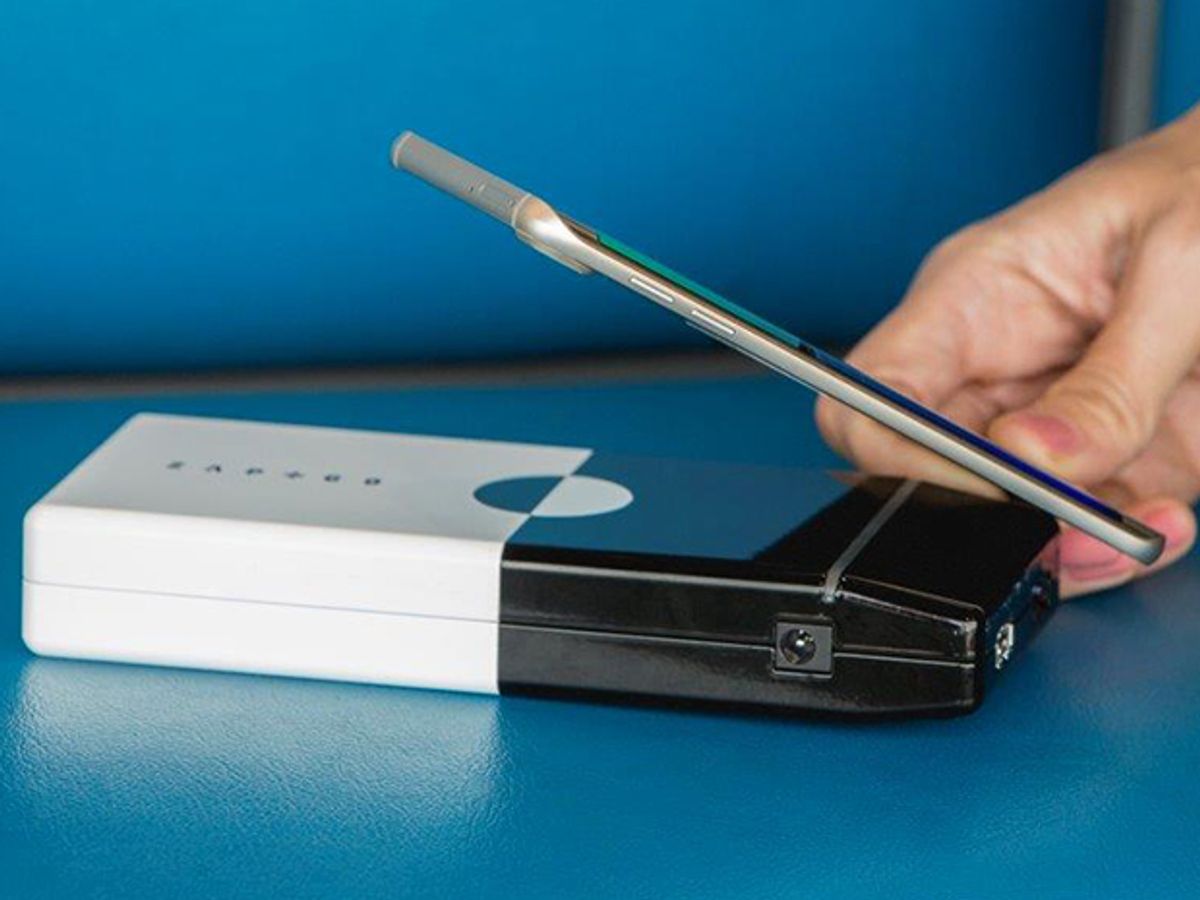At long last, there is a company that is about to launch a commercially available product based on a graphene-enabled supercapacitor. A UK-based startup called Zap&Go has found a way to exploit the attractive properties of graphene for supercapactiors to fabricate a portable charger and expects to make it available to consumers this year.
I had a chance to meet with the company at their exhibitor booth at the Mobile World Congress in Barcelona, Spain to get a demonstration of their device. Below you can see a video interview with Stephen Voller, the CEO of the company, in which he provides a demonstration of the mobile phone charger the company has developed.

Over the years, this blog has dedicated a fair amount of pixels to the prospects of applying graphene to supercapacitors to increase their charge capacity. The research results thus far have been a bit of a mixed bag.
While graphene’s theoretical surface area of 2630 square meters per gram is pretty high, and would presumably bode well for increased capacity, this density is only possible with a single, standalone graphene sheet. And therein lies the rub: you can’t actually use a standalone sheet for the electrode of a supercapacitor because it will result in a very low volumetric capacitance. To get to a real-world device, you have to stack the sheets on top of each other. When you do this, the surface area is reduced.
Nonetheless graphene does have two main benefits going for it in supercapacitors: its ability to be structured into smaller sizes and its high conductance.
It is these qualities that Zap&Go have exploited for their portable charger. While there are other rechargers on the market, they are built around Li-ion batteries that take a long time to charge up and still present some small danger when packed up for traveling.
Instead, the Zap&Go system is based on a supercapacitor so it can be completely charged from empty to full in less than five minutes. The device passes on that charge to your mobile device at about the same rate as a regular Li-ion battery recharger, but this is a limitation of the batteries in the mobile device.
While Voller says that the company will have their portable charger commercially available this year, in the near future, the aim of Zap&Go is to produce a graphene-enabled supercapacitor that can replace the Li-ion batteries that are currently used in mobile devices. Voller believes that this is an outcome that they can achieve within the next 18 months.
The obstacle to date in getting a supercapacitor into mobile devices has been size, according to Voller. Existing supercapacitors are made from double wound aluminum foils, and a supercapacitor sufficient to fully recharge a typical Apple iPhone battery would require it being the size of a soda can and weigh about 0.5kg or a bit more than one pound (1lb).
Obviously, this is too bulky and heavy to package into a portable charger. Zap&Go are essentially replacing the aluminum with a material that uses graphene ink as the conductor. Since graphene is orders of magnitude more conductive than aluminum, the foils inside the supercapacitors can be made far thinner and lighter. This means these new graphene supercapacitors are now small, light and cheap enough to be made into a competitively priced portable charger.
Dexter Johnson is a contributing editor at IEEE Spectrum, with a focus on nanotechnology.



